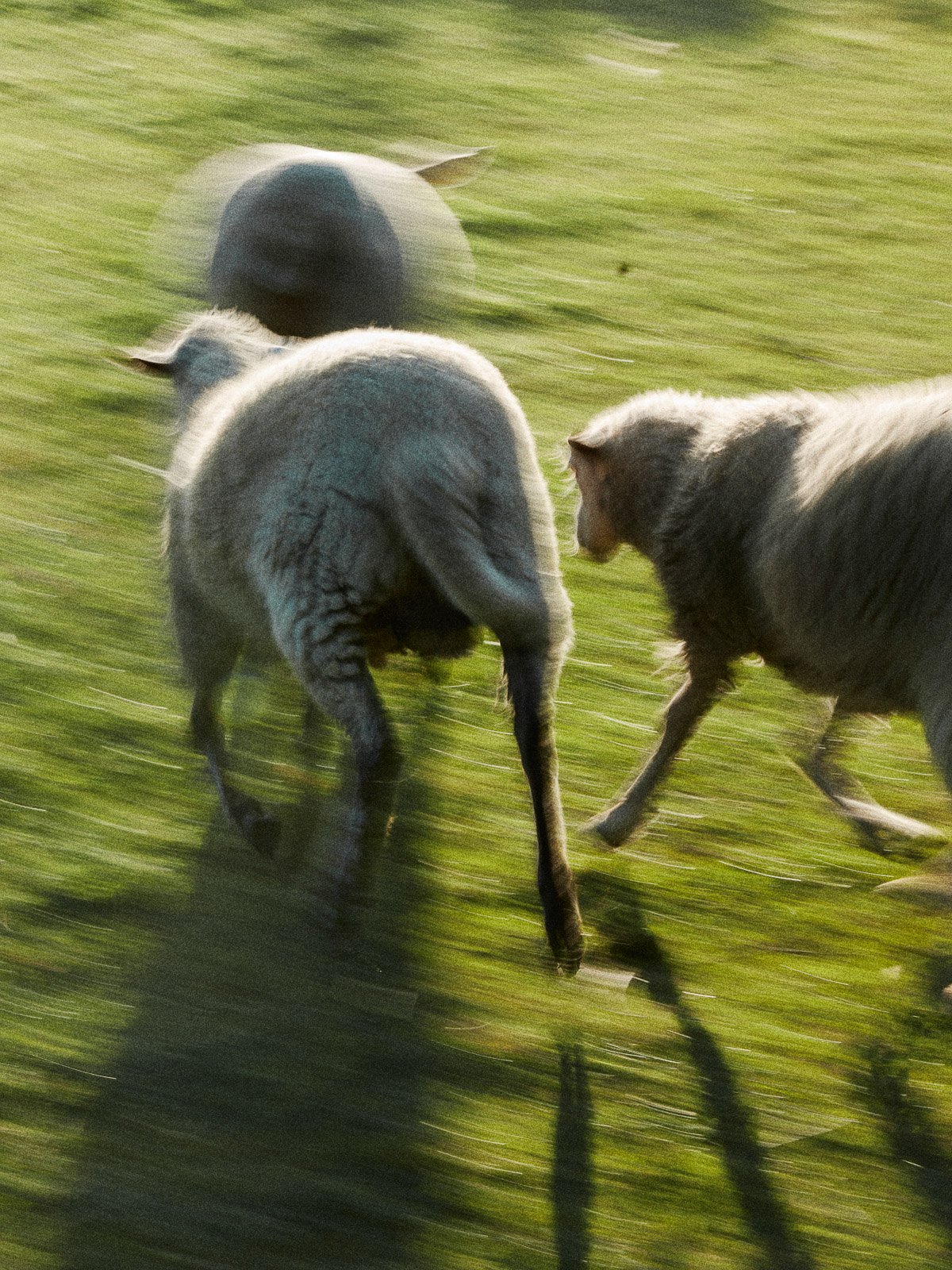This journey began as a research project focused on experimenting with the plants around us, agricultural plant waste, and conventionally undervalued materials to extract pigments for dyeing clothing and artisanal textile objects.
From the beginning, our guiding principle was the pursuit of true sustainability. To create a product with natural and local materials, reusing waste, supporting small workshops in our community, and creating a fully biodegradable product that, at the end of its lifecycle, could nourish the earth.
Through a slow and deliberate process we create genderless, timeless, and durable clothing with the goal of making one of those garments that can be passed from one generation to the next. Through manual labor, we recover an understanding of materials, step away from fast, standardized, industrial processes, and reconnect with the natural rhythm of time and materiality.
BOTANICAL DYES
Each piece is hand dyed in our artisan atelier located in a rural area of Galicia, northwestern Spain. The plant dyeing process is totally unpredictable. Although these colors may appear less solid or uniform than synthetic dyes, the water effect shows that the color is alive and the irregularity of the pigment makes each garment one of a kind.Industrial dyes, although approved by EU regulation, are composed of petrochemicals, toxic substances and heavy metals that endanger the health of workers and aquatic biodiversity.
In this project we propose the use of vegetable dyes to keep our bodies free of toxins and take care of ecosystems. But not always natural dyes are synonym of sustainable, many artisans use heavy metals just to achieve specific colors. Our philosophy is deep ecology and collective health, using only plants, waste and mineral salts in our dyeing process. In our quest to create in balance with the earth, we are in perpetual research to implement the most eco friendly processes.
The use of plants as dyes goes beyond being an alternative to synthetic dyes, in addition to recovering the techniques of an ancestral craft, botanical dyeing brings clothing to life and is a symbolic and ritual way to establish connections between our bodies and nature.
RECOVERING PLANT WASTE
If all the clothes produced today were dyed with cultivated plants, we would need ¾ of the Earth's surface to satisfy the rate of textile production.
We collect plant waste in collaboration with local farmers and food industry companies across Spain. We use the non-edible parts of fruits and vegetables, such as fruit peels, bark and leaves from pruning to make the dye baths. Some of the waste materials we use are: Avocado pits, onion skins, chestnut burrs, leaves, and flowers, pomegranate peels, almond shells, walnut shells and olive leaves.
In our ongoing study of new color sources, we continue researching waste materials and wild plants to expand our color library and achieve better color durability and quality.
ENDLESS CIRCULAR
All the excess water that we use in the dyeing process is used to water the trees in the garden and neighboring crops, as it contains nutrients from the plant remains. Additionally, the plants used after color extraction are composted. A circular vision is present throughout the entire process: all pieces are made entirely from 100% natural and native materials, unprocessed, and dyed only with plants to achieve a biodegradable piece safe for our bodies, living beings, soil and water.
OUR WOOL
We create our own yarn from native merino wool from small extensive farms raised in Spain. It has taken a long time of research to obtain a wool with these characteristics, which is also very soft and does not itch. Managing the entire process allows us to know closely the origin, the care conditions of the sheep, ensuring that we comply with animal welfare standards and that our flocks are free of mulesing.
The wool of our jumpers and accessories comes from “las dehesas” of Extremadura, (Spain) a holistic system that integrates free-range livestock farming, forestry and agriculture within the natural wild ecosystem. Extensive livestock farming includes key aspects such as the raising of native breeds, practicing transhumance, and ensuring animal welfare. This traditional livestock and grazing system has been an example of sustainability, helping to control forest fires, regulating water cycles and soil quality, helping to preserve the balance between biodiversity and the trades that sustain life in rural environments.
In Spain and Portugal, thousands of tons of wool are discarded every year. Meanwhile, oil-derived fabrics continue to be manufactured. Currently, the use of wool has become a very difficult task for shepherds, who often consider it a waste product. As a result, it is very common to find large bonfires in rural Spain where wool is burned.
We believe in the idea that a plant-based future is necessary, but as long as we generate material that is being thrown away, we consider that the most coherent and ecological thing to do is to use it.
KNITTING AND WEAVING PROCESS
One of a kind pieces and accessories are hand knitted in our atelier and in collaboration with artisans from Galicia.
We are happy to be able to work on this project with two expert workshops in wool knitting and weaving. Our jumpers are made in a small workshop in Barcelona that specializes in knitwear, and the quality and excellence of their work is impeccable. Knitting with such an artisanal and natural yarn on these types of machines is a truly complex task, requiring many months of prototyping and adjustments. We are deeply grateful to the team for the time and dedication they have put into helping us bring this idea to life.
In a beautiful little village in León, northern Spain, just a few hours from our atelier, is the family-run workshop that knits our socks and weave our blankets. This family belong to a long tradition generational of artisan weaving that is connected to the history and heritage of that region.
















